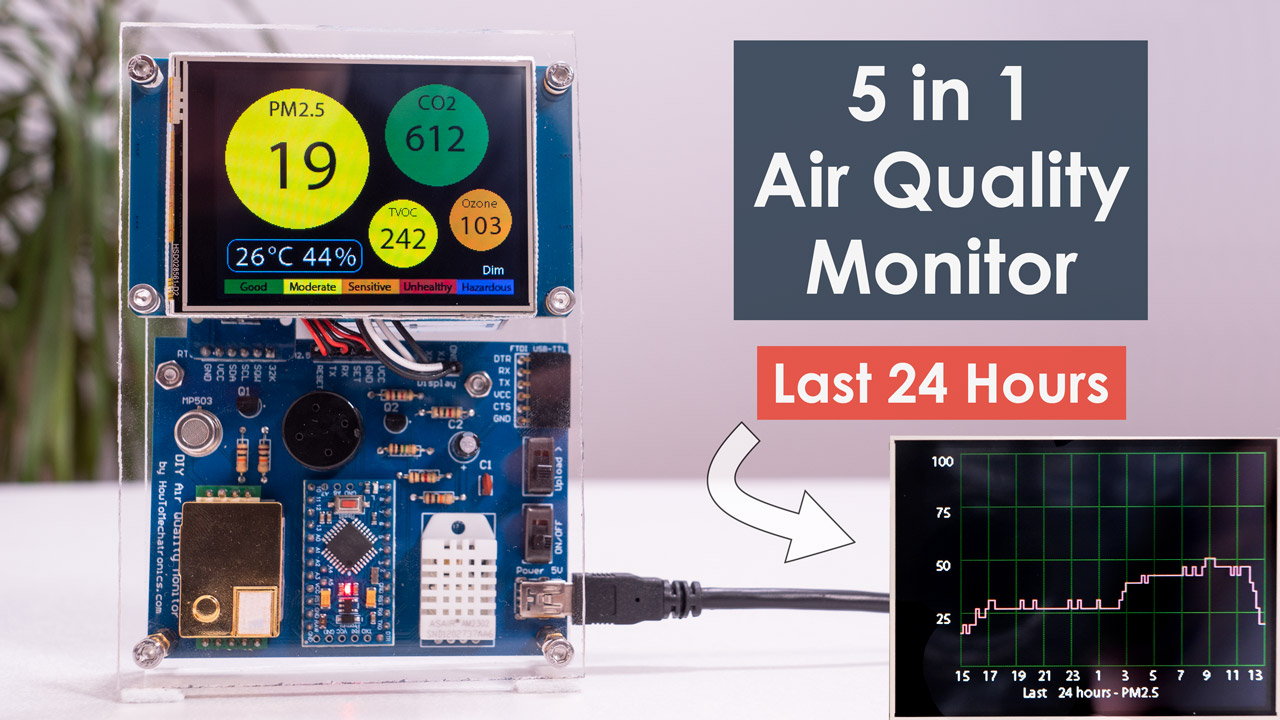
How to Measure Air Quality with a PM2.5 Sensor?
Monitoring air quality is essential for maintaining a healthy environment both indoors and outdoors. One of the most common pollutants that are harmful to our health is PM2.5, which refers to fine particulate matter smaller than 2.5 micrometers in diameter. These particles can penetrate deep into our lungs and even enter our bloodstream, causing respiratory issues, cardiovascular diseases, and other health problems.
Fortunately, you can measure PM2.5 levels with a PM2.5 sensor. These sensors are designed to detect and quantify the concentration of fine particulate matter in the air. By using a PM2.5 sensor, you can track indoor and outdoor air quality levels and take appropriate actions to improve the air quality in your surroundings. So, how can you effectively measure air quality with a PM2.5 sensor?
1. Choose the Right PM2.5 Sensor
There are various types of PM2.5 sensors available in the market, ranging from portable handheld devices to more advanced stationary monitors. Depending on your specific needs, you can select a sensor that suits your budget and requirements. Make sure to choose a reliable PM2.5 sensor with accurate readings and user-friendly features.
When selecting a PM2.5 sensor, consider factors such as measurement accuracy, data logging capabilities, ease of use, connectivity options, and battery life. It’s also essential to check if the sensor meets the required standards for air quality monitoring and if it has been calibrated properly for accurate measurements.
2. Install the PM2.5 Sensor Correctly
Once you have chosen the right PM2.5 sensor, the next step is to install it correctly to ensure accurate measurements. Place the sensor in a strategic location where it can capture the most representative air quality data. For indoor monitoring, position the sensor in a central area away from sources of pollution such as cooking appliances, candles, and tobacco smoke.
For outdoor monitoring, mount the sensor at a height of 10 to 15 feet above the ground and away from obstructions that could block the airflow. It’s essential to follow the manufacturer’s guidelines for sensor placement and avoid exposure to direct sunlight, rain, or extreme temperatures that could affect the sensor’s performance.
3. Monitor and Interpret the PM2.5 Readings
Once the PM2.5 sensor is properly installed, you can start monitoring the air quality readings. Most PM2.5 sensors display real-time data on their built-in screens or through a mobile app or web interface. Make sure to check the readings regularly and pay attention to any spikes or fluctuations in the PM2.5 levels.
Interpret the PM2.5 readings based on the air quality standards and guidelines set by organizations such as the World Health Organization (WHO) or the Environmental Protection Agency (EPA). Keep track of the trends and patterns in the PM2.5 levels over time to identify potential sources of pollution and take corrective actions to improve the air quality.
4. Take Action to Improve Air Quality
Based on the PM2.5 readings and the air quality data collected by the sensor, you can take proactive steps to improve the air quality in your surroundings. If the PM2.5 levels are high, consider implementing preventive measures such as using air purifiers, ventilating the space, reducing indoor sources of pollution, and avoiding outdoor activities during peak pollution hours.
Collaborate with local authorities, community groups, and environmental organizations to address broader air quality issues and advocate for policies that promote cleaner air. By taking collective action and raising awareness about air pollution, we can create a healthier and safer environment for everyone.
In conclusion, measuring air quality with a PM2.5 sensor is a crucial step towards protecting our health and well-being. By choosing the right sensor, installing it correctly, monitoring the readings, and taking proactive actions, we can contribute to cleaner air and a healthier environment for ourselves and future generations.
Was this helpful?
0 / 0